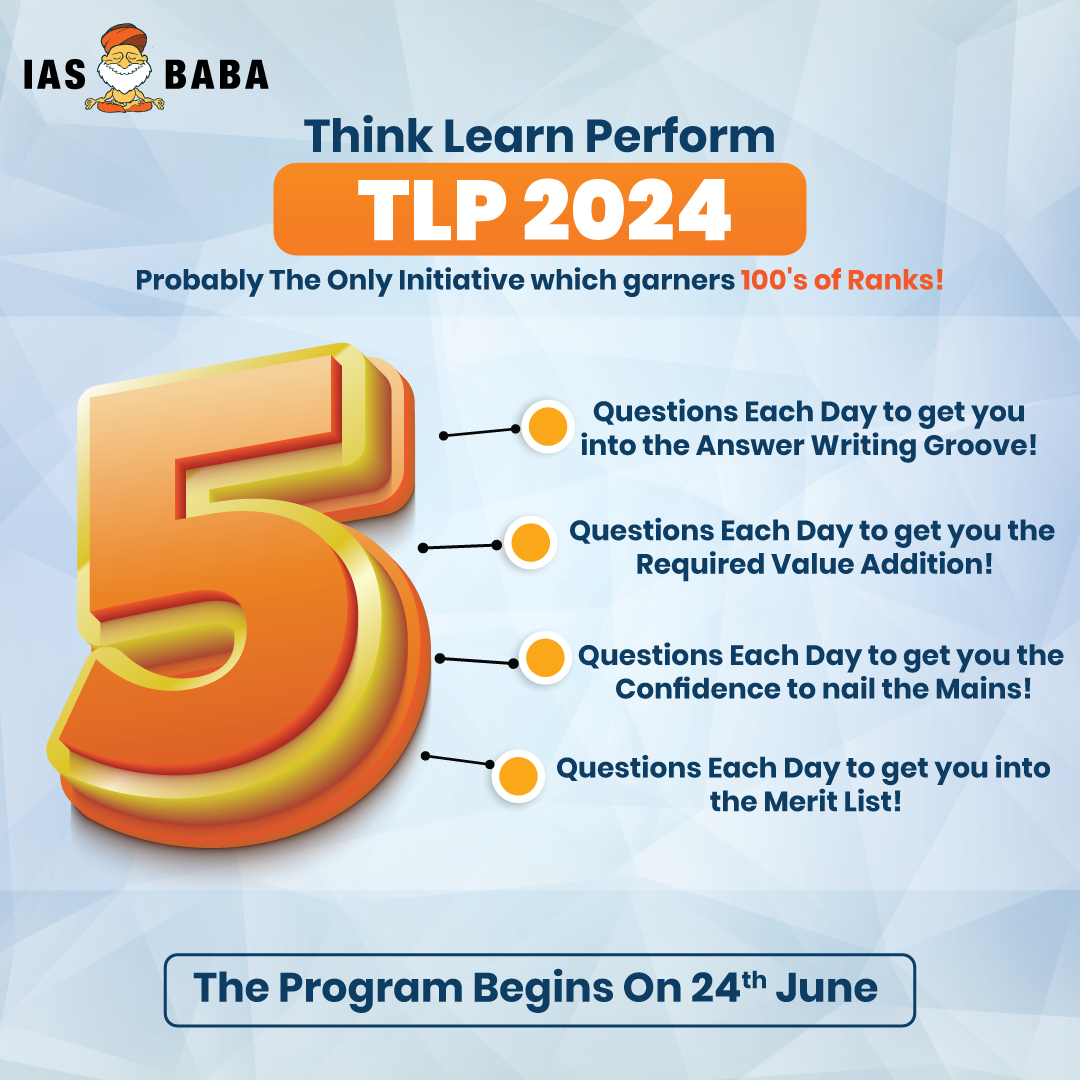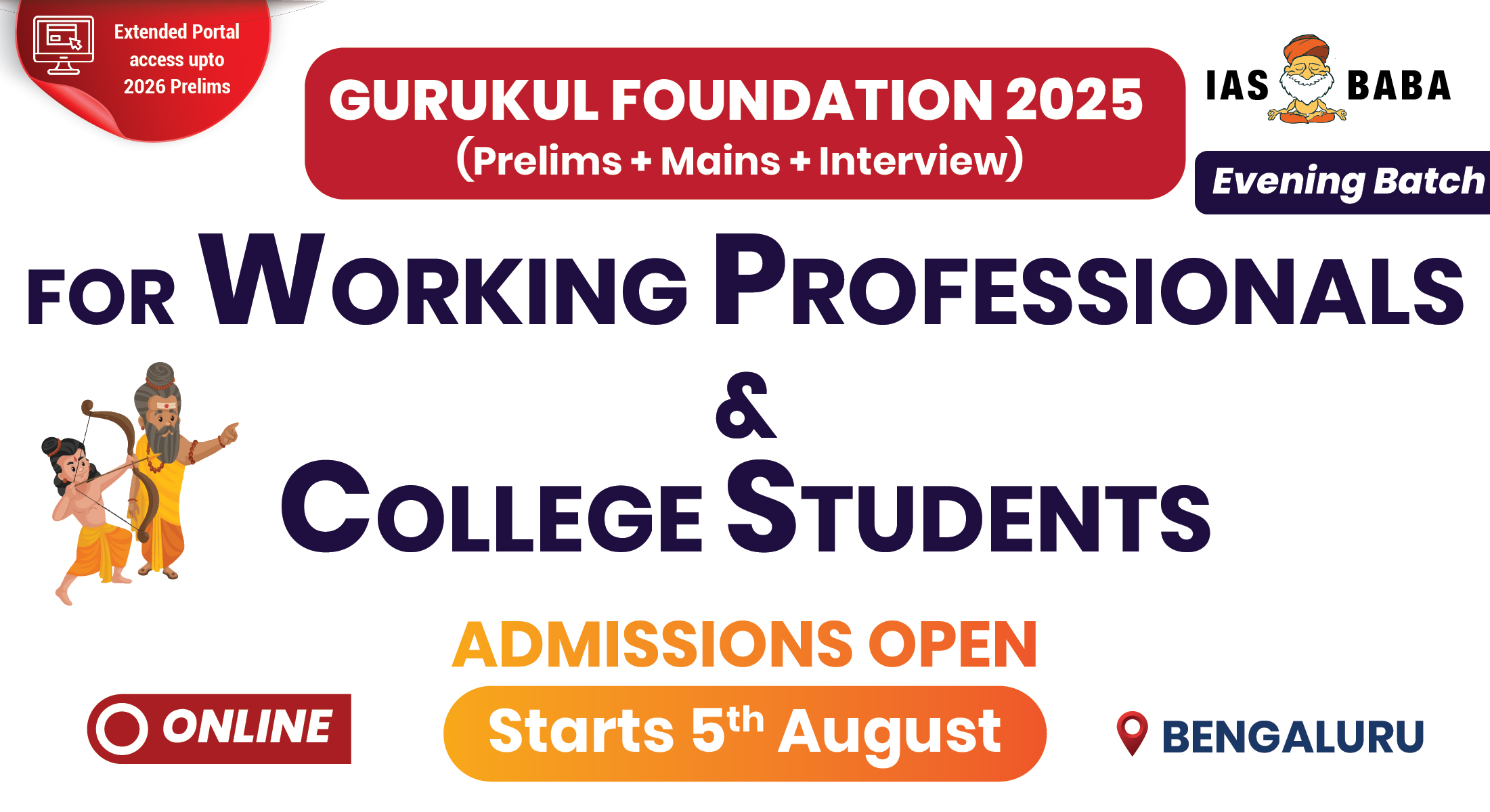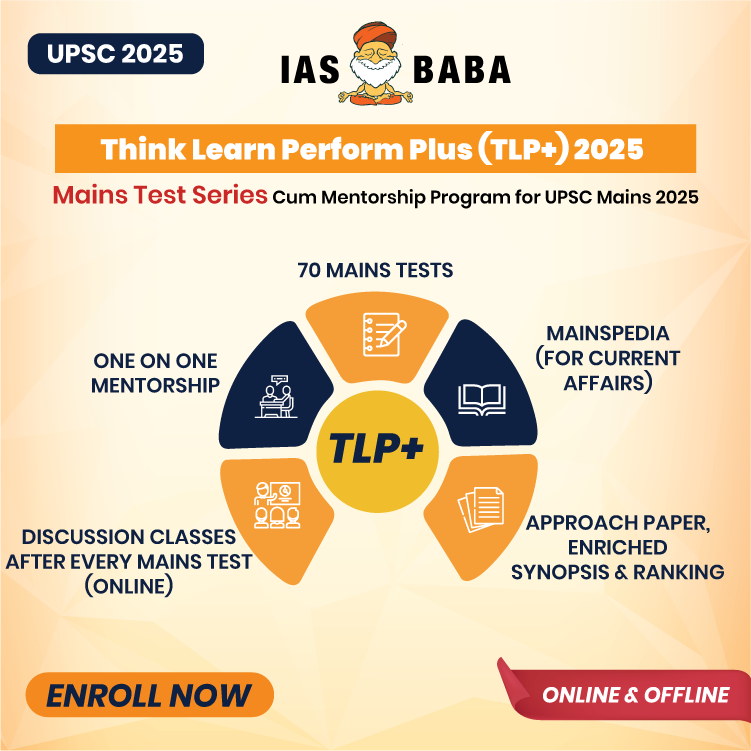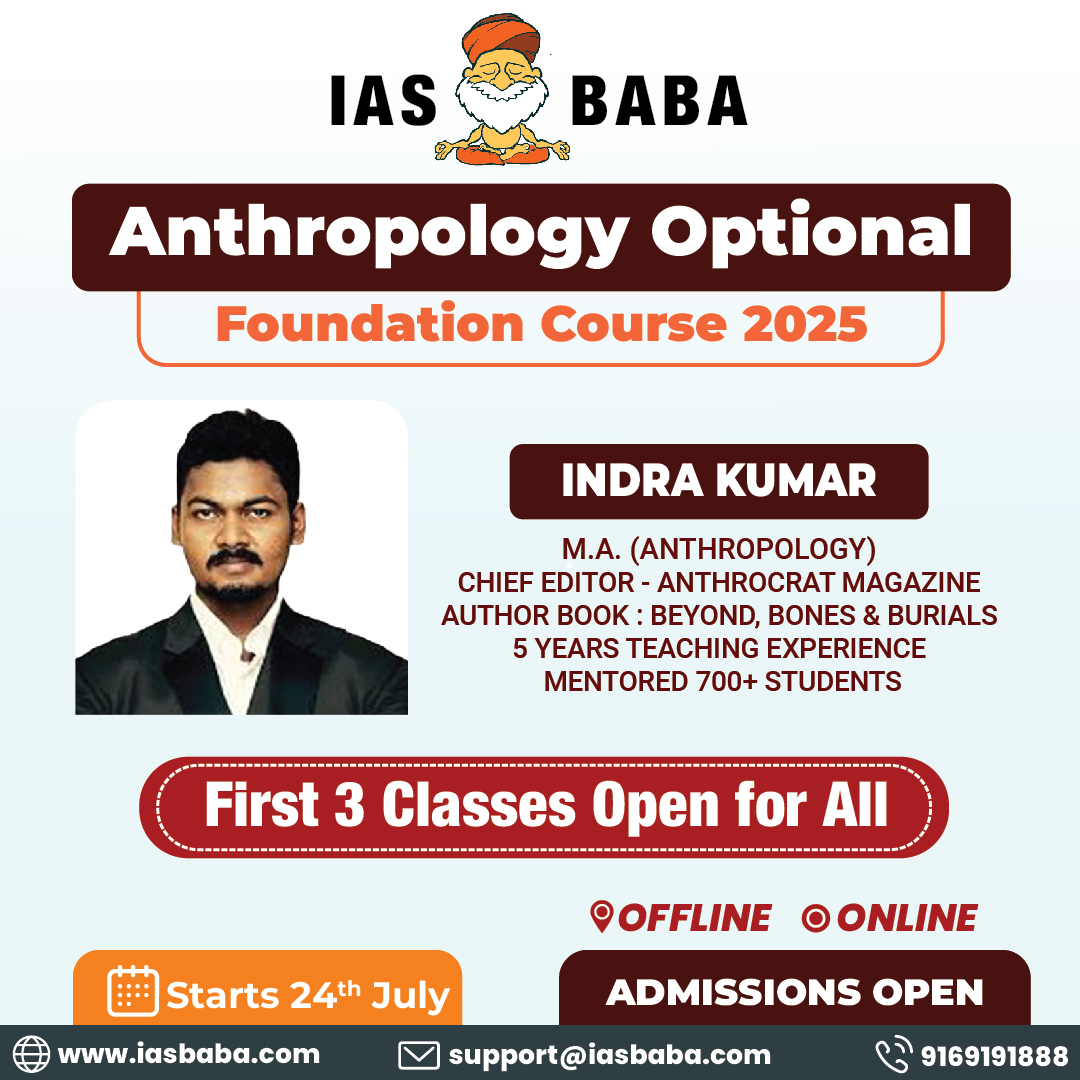IASbaba's Daily Current Affairs Analysis
Archives
(PRELIMS & MAINS Focus)
Syllabus
- Prelims –Environment and Ecology
Context: Recently, the Petersberg Dialogue on Climate Change was held in Berlin.
About key takeaways from Petersberg Dialogue on Climate Change:-
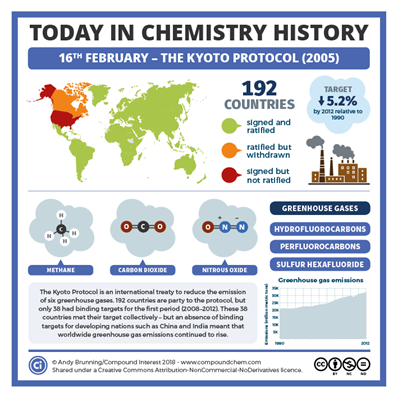
IMAGE SOURCE: Today in chemistry history: The Kyoto protocol – Compound Interest (compoundchem.com)
- The 14th Petersberg Dialogue on Climate Change was hosted by Germany and the United Arab Emirates.
- UAE would be hosting the 28th Conference of Parties (COP28) to the United Nations Framework Convention on Climate Change. (UPSC PRELIMS: UNFCCC – COP27 )
- Objective: to discuss the way forward towards COP28
- The Climate Dialogue was initiated by Germany’s former Chancellor Angela Merkel.
- It was first held in 2010
- United Nations Secretary-General António Guterres emphasised the need for “cleaning up economies of the developed countries by breaking their fossil fuel addiction and driving decarbonisation in every sector to achieve a 1.5-degree global warming pathway.
- He reiterated his earlier call for an Acceleration Agenda, where “all countries hit fast-forward on their Net Zero deadlines”.
Key takeaways:-
- Global renewables target:-
-
- Discussions around a potential global target for renewables at the next climate conference.
- Possibility of an agreement on a global target for renewables and energy efficiency among the G7 countries. (UPSC PRELIMS: G7)
- $100 billion climate finance:-
- It was stated that developed countries are “on a good track” to deliver the $100 billion per year as promised to mobilise by 2020 during the COP15 in 2009.
- However, a recent estimate pegs climate finance needs at $1 trillion per year by 2030 for emerging markets alone.
- This means that climate finance needs are more than 10 times the amount that developed countries have been able to mobilise, 14 years after committing to the $100 billion figure.
- This underlines the urgent need for financial reparations.
- Global Stocktake:-
- 2023 is the year for the Global Stocktake.
- Global Stocktake: a periodic review of global climate action.
- It aims to assess whether current efforts will enable us to reach the objectives set out in the Paris Agreement.
- This is the first Global Stocktake year since the Paris Agreement was signed in 2015.
- The report is set to be released in September of 2023.
About Paris Agreement:-
- It was the successor to the Kyoto Protocol.
- This international climate treaty expired in 2020.
- It was agreed in December 2015.
- Objective: to limit the rise in the average global surface temperature.
- To do this, countries that signed the accord set national pledges to reduce humanity’s effect on the climate that are meant to become more ambitious over time.
- The Paris Accord legally bound its signatories collectively to limit greenhouse gas emissions to keep the temperature rise well below 2.0 degrees Celsius (3.6 Fahrenheit) this century.
- The countries also promised to “pursue efforts” to keep the rise below 1.5C (2.7F).
MUST READ: India’s Long-Term Low-Emission Development Strategy
SOURCE: DOWN TO EARTH
PREVIOUS YEAR QUESTIONS
Q.1) Consider the following statements: (2022)
- The Climate Group is an international non-profit organisation that drives climate action by building large networks and running them.
- The International Energy Agency in partnership with the Climate Group launched a global initiative “EP100”.
- EP100 brings together leading companies committed to driving innovation in energy efficiency and increasing competitiveness while delivering on emission reduction goals.
- Some Indian companies are members of EP100.
- The International Energy Agency is the Secretariat to the “Under2 Coalition”.
Which of the statements given above is correct?
- 1,2, 4 and 5
- 1,3 and 4 only
- 2,3 and 5 only
- 1,2, 3, 4 and 5
Q.2) With reference to the ‘’New York Declaration on Forests’’, which of the following statements is correct? (2021)
- It was first endorsed at the United Nations Climate Summit in 2014
- It endorses a global timeline to end the loss of forests
- It is a legally binding international declaration
- It is endorsed by governments, big companies and indigenous communities.
- India was one of the signatories at its inception
Select the correct answer using the code given below
- 1, 2 and 4
- 1, 3 and 5
- 3 and 4
- 2 and 5
Syllabus
- Prelims –Environment and Ecology
Context: Recently a new funding mechanism ‘the Innovative Finance Facility for Climate in Asia and the Pacific Financing Partnership Facility (IF-CAP)’ was launched.
About the Innovative Finance Facility for Climate in Asia and the Pacific Financing Partnership Facility (IF-CAP):-
- In line with climate change financing requirements, ADB(Asian Development Bank) announced its newest climate finance program: the Innovative Finance Facility for Climate in Asia and the Pacific (IF-CAP). (UPSC PRELIMS: ADB)
- Objective: use guarantees from partners for leverage to accelerate billions of dollars in much-needed climate change investment
- IF-CAP’s initial partners are Denmark, Japan, the Republic of Korea, Sweden, the United Kingdom, and the United States.
Intended Benefits of IF-CAP:-
- With a model of ‘$1 in, $5 out’, the initial ambition of $3 billion in guarantees could create up to $15 billion in new loans for much-needed climate projects across Asia and the Pacific.
- Financing will help vulnerable countries in Asia and the Pacific region meet their mitigation and adaptation goals.
- It will support ADB’s raised ambition for $100 billion in climate finance from 2019-2030.
- . IF-CAP will pilot a guarantee mechanism, where every US$1 guarantee from financing partners can generate up to US$5 in new loans for climate adaptation and mitigation projects across Asia.
- IF-CAP operates as an umbrella mechanism for mobilising resources for climate adaptation and mitigation projects.
- Under this umbrella is the IF-CAP Guarantee Trust Fund, which will provide guarantees to ADB covering payment defaults.
- The facility will finance projects over a five-year investment period, but guarantees will remain effective for 25 years.
- In addition, ADB will establish donor trust funds, framework arrangements, and other forms of financing partnerships, such as grants, guarantees, and similar arrangements that support IF-CAP’s objectives and scope.
- Most contributions to the facility will be in the form of guarantees or grants. (UPSC MAINS: Significance of ADB, NDB and AIIB)
Structure and working mechanism:-
- Eligibility: All developing countries that are eligible to receive assistance from ADB are also eligible for support from IF-CAP.
- Selection process: ADB will select project proposals based on criteria agreed with the Donor Committee.
- Donor Committee: a committee of financial contributors which will take decisions on matters including specific guarantee and grant fund considerations,
- In general, projects will be aligned with the Paris Agreement.
- Both sovereign and non-sovereign projects will have access to IF-CAP funding unless otherwise decided by the Donor Committee.
- IF-CAP support can be combined with other ADB resources and forms of bilateral or multilateral assistance and made available to central and sub-national governments, government agencies, the private sector, and other entities eligible to receive assistance from ADB.
- A Strategic Partners Forum will gather representatives of developing countries, financing partners and other stakeholders on an annual basis to provide strategic guidance on IF-CAP operations with a view to aligning climate and development needs with available funding.
MUST READ: ADB Financing to Support Urban Development in Nagaland
SOURCE: OBSERVER RESEARCH FOUNDATION
PREVIOUS YEAR QUESTIONS
Q.1) “Rapid Financing Instrument” and “Rapid Credit Facility” are related to the provisions of lending by which of the following: (2022)
- Asian Development Bank
- International Monetary Fund
- United Nations Environment Programme Finance Initiative
- World Bank
Q.2) With reference to the “G20 Common Framework”, consider the following statements: (2022)
- It is an initiative endorsed by the G20 together with the Paris Club.
- It is an initiative to support Low-Income Countries with unsustainable debt.
Which of the statements given above is/are correct?
- 1 only
- 2 only
- Both 1 and 2
- Neither 1 nor 2
Syllabus
- Prelims –Economy
Context: Recently, the US Federal Reserve raised interest rates by 25 basis points.
About US Federal Reserve:-
- The Federal Reserve System is the central bank of the United States.
- The role of the Federal Reserve:-
- Conducting the US monetary policy to promote maximum employment and stable prices (UPSC PRELIMS: Fed tapering )
- Promoting the stability of the financial system and seeking to minimise and contain systemic risks through active monitoring and engagement in America and overseas
- Promoting the safety and soundness of individual financial institutions.
- Monitoring the financial system.
- Promoting consumer protection
Impact of the Fed on the global market and their economy:-
- A high rate signal by the Fed means a lower impetus to growth in the US
- Currency markets: Rate hikes by the Federal Reserve affect not only the US economy but also shape the macroeconomic outlook and exert a certain degree of influence on the monetary policies in other emerging economies. (UPSC PRELIMS: Exchange Rate)
Impact of Increased Interest Rates on India:-
- Emerging economies such as India tend to have higher inflation and higher interest rates than those in developed countries such as the US.
- As a result, financial institutions, particularly Foreign Institutional Investors (FIIs) would want to borrow money in the US at low-interest rates in dollar terms and then invest that money in government bonds of emerging countries such as India in local currency terms to earn a higher rate of interest.
- However, when the US Federal raises its domestic interest rates, the difference between the interest rates of the two countries decreases.
- This makes India less attractive for the currency carry trade.
- As a consequence, some of the money may be expected to move out of the Indian markets and flow back to the US. (UPSC PRELIMS: US Fed Reserve Hike )
- On Equity Market:-
- Bond yields will rise due to the growing dollar shortage in the global market.
- On Export and Forex:-
- India is one of the largest crude oil importers in the world.
- A weaker rupee vis-à-vis a dollar results in more expensive imports of crude oil that may put a cost-driven inflationary push across the whole economy.
- India’s exports on the other hand will benefit to some extent from a stronger dollar with respect to the rupee.
MUST READ: Rupee Depreciation
SOURCE: THE INDIAN EXPRESS
PREVIOUS YEAR QUESTIONS
Q.1) With reference to the Indian economy, consider the following statements: (2022)
- If the inflation is too high, the Reserve Bank of India (RBI) is likely to buy government securities.
- If the rupee is rapidly depreciating, RBI is likely to sell dollars in the market.
- If interest rates in the USA or European Union were to fall, that is likely to induce RBI to buy dollars.
Which of the statements given above is correct?
- 1 and 2 only
- 2 and 3 only
- 1 and 3 only
- 1, 2 and 3
Q.2) With reference to the Indian economy, consider the following statements: (2022)
- An increase in Nominal Effective Exchange Rate (NEER) indicates the appreciation of the rupee.
- An increase in the Real Effective Exchange Rate (REER) indicates an improvement in trade competitiveness.
- An increasing trend in domestic inflation relative to inflation in other countries is likely to cause an increasing divergence between NEER and REER.
Which of the above statements is correct?
- 1 and 2 only
- 2 and 3 only
- 1 and 3 only
- 1, 2 and 3
Syllabus
- Prelims –Science and Technology
Context: Recently, Cadbury recalls chocolates in the UK over listeria contamination fears.
About Listeria contamination:-
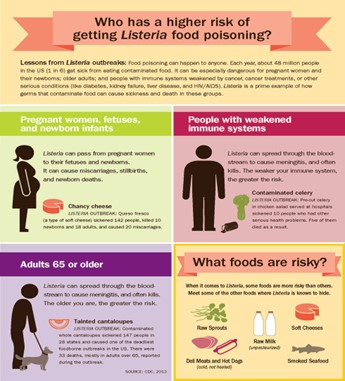
IMAGE SOURCE: We help create a safer world for you | UL Solutions
- Listeria infection is a foodborne bacterial illness.
- It is typically caused by foods infected with the Listeria monocytogenes bacteria.
- The bacteria exist in the environment.
- It is found in water, soil and some animals’ intestines.
- Listeria bacteria can survive refrigeration and even freezing.
- The bacteria exist in the environment.
Symptoms:-
- Fever
- Chills
- Muscle aches
- Nausea
- Diarrhea
Causes:-
- Listeria bacteria can be found in soil, water and animal faeces.
- People can get infected by eating the following:
- Raw vegetables that have been contaminated from the soil or from contaminated manure used as fertilizer
- Contaminated meat
- Unpasteurized milk or foods made with unpasteurized milk
- Certain processed foods such as soft cheeses, hot dogs and deli meats that have been contaminated after processing
- Unborn babies can contract a listeria infection from the mother.
Risk factors-
- Pregnant women and people who have weak immune systems are at highest risk of contracting a listeria infection. (UPSC PRELIMS: Immune Imprinting )
- People older than 65
- People who have AIDS (UPSC PRELIMS: World AIDS Day)
- People who are receiving chemotherapy
- People who have diabetes or kidney disease
- People who take high-dose prednisone or certain rheumatoid arthritis drugs
- People who take medications to block rejection of a transplanted organ
Prevention:-
- Keeping things clean
- Washing hands thoroughly with warm, soapy water before and after handling or preparing food.
- After cooking, use hot, soapy water to wash the utensils, cutting boards and other food preparation surfaces.
- Scrubing raw vegetables.
- Cooking the food thoroughly.
MUST READ: American Foulbrood (AFB) disease
SOURCE: DOWN TO EARTH
PREVIOUS YEAR QUESTIONS
Q.1) Bisphenol A (BPA), a cause of concern, is a structural/key component in the manufacture of which of the following kinds of plastics? (2021)
- Low-density polyethene
- Polycarbonate
- Polyethene terephthalate
- Polyvinyl Chloride
Q.2) “Triclosan” considered harmful when exposed to high levels for a long time, is most likely present in which of the following? (2021)
- Food preservatives
- Fruit ripening substances
- reused plastic containers
- Toiletries
Syllabus
- Prelims –Governance
Context: The World Press Freedom Index was released recently.
About World Press Freedom Index:-
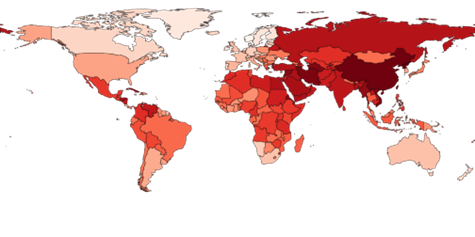
IMAGE SOURCE: THE HINDU
- The World Press Freedom Index is published every year since 2002 by Reporters Sans Frontieres (RSF) or Reporters Without Borders.
- Reporters Without Borders: it is an independent NGO based in Paris with consultative status with the United Nations, UNESCO, the Council of Europe and the International Organization of the Francophonie (OIF).
- OIF: 54 french speaking nations collective.
- The Index ranks countries and regions according to the level of freedom available to journalists. (UPSC MAINS: Challenges to Freedom of Press)
- However, it is not an indicator of the quality of journalism.
- Scoring Criteria:-
- The Index’s rankings are based on a score ranging from 0 to 100 that is assigned to each country or territory, with 100 being the best possible score.
- Evaluation Criteria:-
- Each country or territory’s score is evaluated using five contextual indicators.
- These include political context, legal framework, economic context, sociocultural context and safety.
World Press Freedom Index 2023 Rankings:-
- Norway, Ireland and Denmark occupied the top three positions in press freedom.
- Vietnam, China and North Korea constituted the bottom three.
- India’s ranking in the 2023 World Press Freedom Index has slipped to 161 out of 180 countries. (UPSC PRELIMS: World Press Freedom Index 2022)
MUST READ: Index Monitoring Cell (IMC)
SOURCE: THE HINDU
PREVIOUS YEAR QUESTIONS
Q.1) Which of the following factors constitutes the best safeguard of liberty in a liberal democracy? (2021)
- A committed judiciary
- Centralization of powers
- Elected government
- Separation of powers
Q.2) Which of the following are regarded as the main features of the “Rule of Law”? (2018)
- Limitation of powers
- Equality before the law
- People’s responsibility to the Government
- Liberty and civil rights
Select the correct answer using the code given below :
- 1 and 3 only
- 2 and 4 only
- 1, 2 and 4 only
- 1, 2, 3 and 4
Syllabus
- Prelims –Polity
Context: Recently, the Bombay High Court stated that the Protection of Children from Sexual Offences (POCSO) Act was not enacted to punish minors in a consensual relationship.
About the Protection of Children from Sexual Offences (POCSO) Act:-
- The Protection of Children from Sexual Offences Act (POCSO Act) was enacted in 2012.
- Objective: to effectively address sexual abuse and sexual exploitation of children and pornography. (UPSC MAINS: Pornography – Impact on Children & Society )
- The Act has been amended in 2019.
- The amendment contains provisions for the enhancement of punishments for various offences and provides security and dignified childhood for a child. (UPSC PRELIMS: National Commission for Protection of Child Rights)
Salient provisions of the Act:-
- The Act defines a Child as any person below eighteen.
- The Act remains gender-neutral.
- The Act also defines different forms of sexual abuse
- It includes penetrative and non-penetrative assault, as well as sexual harassment and pornography.
- The Act deems a sexual assault to be “aggravated” if the abused child is mentally ill or the abuse is committed by a person in a position of trust or authority like a family member, police officer, teacher, or doctor.
- The law provides for relief and rehabilitation as soon as the complaint is made.
- The Special Juvenile Police Unit or the local police will make immediate arrangements for the care and protection of a child.
- The Arrangements such as obtaining emergency medical treatment for the child and placing the child in a shelter home etc will be made available.
- The Act contains provisions for Mandatory reporting.
- This casts a legal duty upon a person who has knowledge that a child has been sexually abused to report the offence.
- If he fails to do so, he may be punished with six months imprisonment and/ or a fine.
- The Act provides for the establishment of Special Courts for the trial of offences under the Act.
- The Act prescribes a maximum punishment of life imprisonment or the death penalty.
- The Act provides a mandatory minimum punishment of three years.
MUST READ: Sexual Intent is Key to POCSO Act: SC
SOURCE: THE PRINT
PREVIOUS YEAR QUESTIONS
Q.1) ‘Right to Privacy’ is protected under which Article of the constitution of India? (2021)
- Article 15
- Article 19
- Article 21
- Article 29
Q.2) Other than the Fundamental Rights, which of the following parts of the Constitution of India reflect/reflect the principles and provisions of the Universal Declaration of Human Rights (1948)? (2020)
- Preamble
- Directive Principles of State Policy
- Fundamental Duties
Select the correct answer using the code given below:
- 1 and 2 only
- 2 only
- 1 and 3 only
- 1, 2 and 3
Syllabus
- Prelims –Economy
Context: The report on Currency & Finance 2022-23 was released recently.
About Currency & Finance 2022-23:-
- It is released by the Reserve Bank of India’s (RBI) Department of Economic and Policy Research (DEPR). (UPSC PRELIMS: RBI’s Monetary Policy Committee )
- The theme of the report is ‘Towards a Greener Cleaner India’.
Key findings:-
- Net zero target:-
- India aims to achieve the net zero target by 2070.
- This would require an accelerated reduction in the energy intensity of GDP by around 5% annually and a significant improvement in its energy mix in favour of renewables to around 80% by 2070-71.
- The cumulative total expenditure for adapting to this climate change in India is estimated to be Rs 85.6 lakh crore (at 2011-12 prices) by the year 2030.
- Implications for Financial Stability:-
- The financial sector faces the dual challenge of recalibrating its operations and business strategies to support the green transition process while also strengthening resilience to rising vulnerability to adverse climate events so as to safeguard financial stability.
- On the first challenge, estimates suggest that the green financing requirement in India could be at least 2.5% of GDP annually to address the infrastructure gap caused by climate events.
- On the second challenge, the results of a climate stress test reveal that public sector banks may be more vulnerable than private sector banks in India.
Measures suggested:-
- Introducing an Emissions Trading System (ETS) linked to green taxonomy, covering all sectors of the economy
- This can partly balance subsidies and taxes.
- Ramping up domestic capacity to mine rare earth elements or procure them through long-term contracts and outward FDI (UPSC PRELIMS: FDI Inflow )
- Complementing green building standards with IoT-based monitoring and AI and ML to manage and reduce energy demand
- Boosting climate-resilient agriculture
- Production of green hydrogen using renewable energy
- Investment in carbon capture and storage technologies.
MUST READ: RBI- Integrated Ombudsman Scheme
PREVIOUS YEAR QUESTIONS
Q.1) In India, the Central Bank’s function as the “lender of last resort” usually refers to which of the following? (2021)
- Lending to trade and industry bodies when they fail to borrow from other sources
- Providing liquidity to the banks having a temporary crisis
- Lending to governments to finance budgetary deficits
Select the correct answer using the code given below
- 1 and 2
- 2 only
- 2 and 3
- 3 only
Q.2) Consider the following statements: (2021)
- The Governor of the Reserve Bank of India (RBI) is appointed by the Central Government.
- Certain provisions in the Constitution of India give the Central Government the right to issue directions to the RBI in the public interest.
- The Governor of the RBI draws his power from the RBI Act.
Which of the above statements is correct?
- 1 and 2 only
- 2 and 3 only
- 1 and 3 only
- 1, 2 and 3
Syllabus
- Prelims –Geography
Context: Recently, Brazil has been pushing out illegal miners from its Yanomami territory.
About Yanomami:-
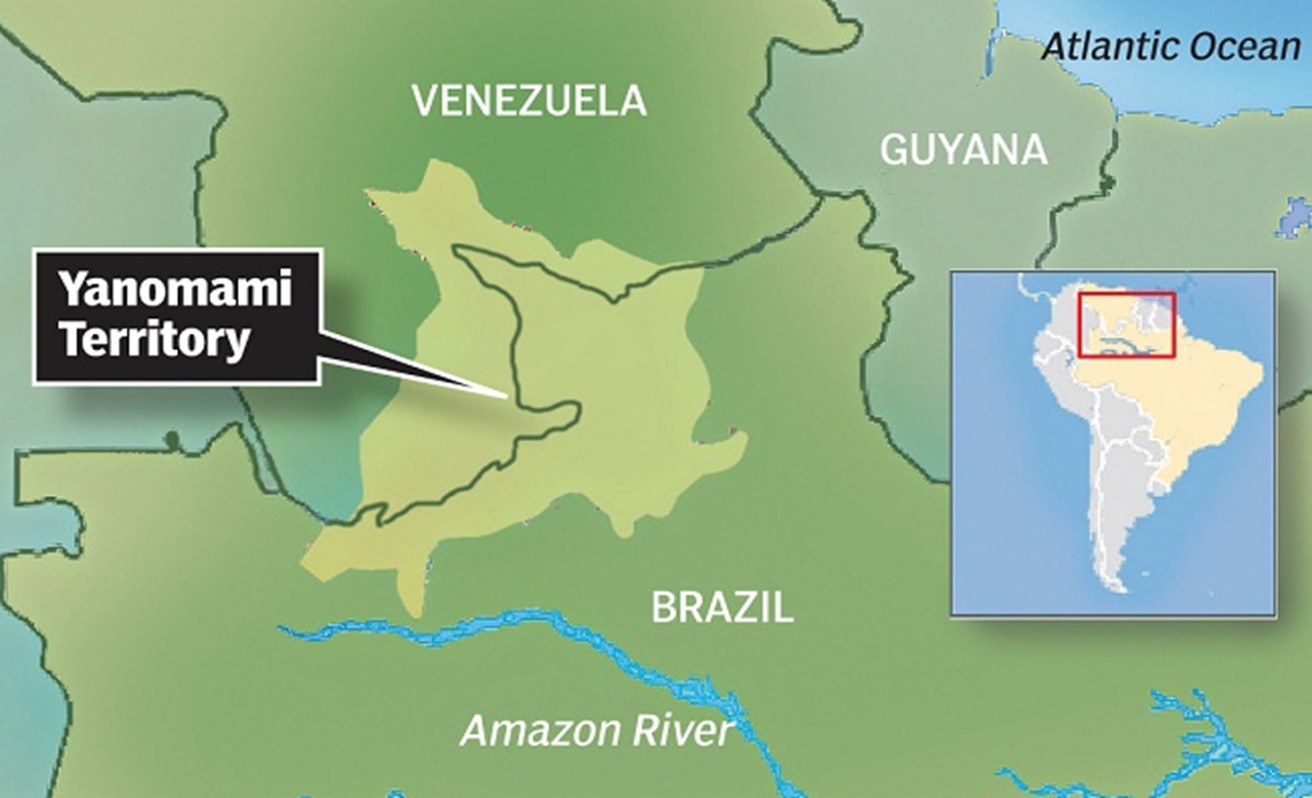
IMAGE SOURCE: The Yanomami Tribe of the Amazon Rainforests | Only Tribal
- The Yanomami live in the rainforests and mountains of northern Brazil and southern Venezuela, and are, according to Survival International, the largest relatively isolated tribe in South America.
- Guarani, Kaingang, Pataxó, Hã Hã Hãe, Tupinambá, Yanomami, Tikuna and Akuntsu are popular tribes of the Amazon basin. (UPSC PRELIMS: Deforestation in Amazon Basin)
- Amazon is a river of South America and its basin is the largest tropical rainforest in the world.
- The tribe numbers around 38,000 today, and its members live in the contiguous forested territory of around 9.6 million hectares in Brazil and 8.2 million hectares in Venezuela.
- They live in large, circular houses called yanos or shabonos, some of which can hold up to 400 people.
- The Yanomami consider all people to be equal and do not have a chief.
- Instead, all decisions are based on consensus after long discussions and debates.
- They are speakers of the Xirianá language.
- A Brazilian indigenous leader Davi Kopenawa who secured the land rights of the Yanomami people was awarded the Right Livelihood Award-2019, also known as Sweden’s alternative Nobel Prize. (UPSC PRELIMS: Nobel Peace Prize 2022 )
MUST READ: India and Brazil
SOURCE: THE INDIAN EXPRESS
PREVIOUS YEAR QUESTIONS
Q.1) Consider the following pairs: (2022)
The region often mentioned in the news: Country
- Anatolia Turkey
- Amhara Ethiopia
- Cabo Delgado Spain
- Catalonia Italy
How many pairs given above are correctly matched?
- Only one pair
- Only two pairs
- Only three pairs
- All four pairs
Q.2) Which one of the lakes of West Africa has become dry and turned into a desert? (2022)
- Lake Victoria
- Lake Faguibine
- Lake Oguta
- Lake Volta
Syllabus
- Mains – GS 2 (Governance)
Context: A national effort to establish routine dietary and nutritional assessments for the entire population is the need of the hour.
About Food Security:
- Food security refers to the state in which all individuals in a country have access to sufficient, safe, and nutritious food to meet their dietary needs and preferences for an active and healthy life.
This involves various dimensions such as:
- Availability of food through production and imports
- Accessibility of food without any discrimination, and
- Affordability of food for everyone.
Zero Food Prevalence in India
NFHS-5 Data:
- As per the National Family Health Survey (NFHS-5), among mothers with a child between ages 6-23 months, 18 percent reported that their child did not eat any food, referred to as “zero-food”, in the 24 hours preceding the survey.
- Zero-food prevalence:
- 30 percent for infants aged 6-11 months.
- 13 percent among the 12-17 months old.
- 8 percent among the 18-23 months old.
- An estimated 60 lakh zero-food children of 6-23 months of age in India not getting to eat every day lies substantial deprivations in specific food groups.
- More than 80 percent had not consumed any protein-rich foods for an entire day (“zero-protein”).
- 40 percent did not eat any grains (roti, rice, etc) for an entire day.
- 6 out of 10 children do not consume milk or dairy of any form every day (“zero milk”).
Daily minimum calorie intake for a child as per the World Health Organisation (WHO):
- At six months of age, 33 percent of the daily calorie intake is expected to come from food.
- At 12 months of age, 61 percent of the daily calorie intake is expected to come from food.
- It is presumed that the child obtains the remaining calories through breastfeeding, meaning the child is breastfed whenever they need it throughout the day and night, and not solely when the mother can provide it.
- Percentage of food-sourced calories only increases further when a child cannot receive breast milk when needed.
Issues and challenges with current measures:
- Severe food insecurity:
- Going without food for an entire day at this critical period of a child’s development raises serious concerns related to severe food insecurity.
- Faulty assessment:
- The assessment of the extent of nutritional deprivation among young children in India has, thus far, relied on measures of anthropometric failure such as the percentage of children short for their age (stunting) or weighing less given their height (wasting), compared to a reference population.
- These anthropometric measures are, at best, proxies suggesting plausible overall deficiencies in the child’s environment, without any guidance on the specific nature of the deficiencies.
- Non-communicable diseases:
- The rising burden of cardiovascular and other non-communicable diseases in India, particularly among the rapidly growing “middle class”, is strongly linked to diet and nutrition.
- The Role of Poshan 2.0:
- Mission Poshan 2.0 is a flagship program dedicated to maternal and child nutrition in India.
- However, appropriate food-based metrics are not developed to monitor and assess the program’s performance effectively.
Measures India should take to fight Hunger:
- A national effort to establish routine dietary and nutritional assessments for the entire population is the need of the hour.
- Appropriate food-based metrics should be developed to effectively monitor and assess the performance of Poshan 2.0.
- The zero-food metric provides a good start.
- The success of the Swachh Bharat Mission (SBM) offers valuable insights for Poshan 2.0, in its strategic use of directly trackable metrics, as well as a strong political commitment at the highest levels.
- Measuring the availability, accessibility and affordability of nutritious food, especially for disadvantaged and vulnerable populations such as young children, women should be the foundation for any evidence-based policy to end hunger and improve nutritional security.
India has taken several initiatives to achieve food security and end hunger, including:
- Mid-day Meal Scheme: The Mid-day Meal Scheme provides hot, cooked meals to school children to improve their nutritional status and increase school attendance.
- Integrated Child Development Services (ICDS) Scheme: The ICDS Scheme provides a package of services, including supplementary nutrition, health check-ups, and pre-school education, to young children and pregnant and lactating mothers.
- Mission Poshan 2.0: Launched in 2021, Mission Poshan 2.0 is a flagship programme dedicated to maternal and child nutrition, with a focus on food-based initiatives to achieve the SDG of zero hunger.
- National Nutrition Mission (Poshan Abhiyaan): Launched in 2018, the mission aims to reduce malnutrition among children, adolescent girls, and pregnant and lactating mothers by providing nutritional supplements and promoting behavioural change through community mobilization.
- Agriculture and Rural Development Initiatives: India has various agriculture and rural development initiatives to increase food production, enhance rural livelihoods, and reduce poverty, such as the Pradhan Mantri Fasal Bima Yojana, Pradhan Mantri Krishi Sinchai Yojana, and Deen Dayal Antyodaya Yojana-National Rural Livelihoods Mission.
Way Forward:
The need of the hour is to make addressing child malnutrition the top priority of the government machinery, and all year around. Thus fixing the pre-existing schemes is the obvious answer to addressing India’s multi-dimensional nutrition challenge.
Source: Indian Express
Syllabus
- Mains – GS 2 (Governance)
Context: The Union Health Ministry has said that it will soon release a transplant manual and a standard course for training transplant coordinators.
About Organ donation in India:
- Organ donation means giving part of the body (organ) to a person with end-stage organ disease who needs a transplant.
- In India, organ donations are legal under the Transplantation of Human Organs Act (THOA), 1994, which also legalizes the concept of ‘brain death’, the permanent cessation of all brain functions.
- Organ donation is a voluntary process wherein you can fill up a consent form to donate your organs in the event of your demise.
Types of organ donation:
Living Donor Organ Donation:
- A person during his life can donate one kidney, a portion of the pancreas, and a part of the liver.
- Living Donor is any person not less than 18 years of age who voluntarily authorizes the removal of any of his organ and/or tissue, during their lifetime, as per prevalent medical practices for therapeutic purposes.
- The donor can be a family member, relative, friend, neighbour, or in-law.
Deceased Donor Organ Donation:
- A person can donate multiple organs and tissues after (brain-stem/cardiac) death. Their organ continues to live in another person’s body.
- Deceased Donor is anyone, regardless of age, who can become an organ and tissue donor after their death (Brainstem/Cardiac).
- Consent of a near relative or a person in lawful possession of the dead body is required.
Eligibility criteria:
- There is no age limit for organ donation. It can be started at as young as six weeks.
- The only essential thing is the health and condition of your organs.
About Organ Transplantation in India:

- The Transplantation of Human Organs Act of 1994 provides a number of laws for the removal and preservation of human organs.
- Additionally, it controls the transplantation of human organs for medical treatment and prohibits the sale of human organs.
- The number of total organ transplants in the country has substantially increased from less than 5000 in the year 2013 to more than 15000 in the year 2022.
- Now, more organs per deceased donor are being utilized due to better coordination through the network of Organ and Tissue Transplant Organizations at National (NOTTO), Regional (ROTTO) and State level (SOTTO).
Laws and Rules governing Organ Transplant in India
Transplantation of Human Organs Act (THOA) 1994:
- It was enacted to provide a system of removal, storage and transplantation of human organs for therapeutic purposes and for the prevention of commercial dealings in human organs.
- THOA is now adopted by all States except Andhra Pradesh and Jammu & Kashmir, who have their own similar laws.
- Under THOA, source of the organ may be:
- Near Relative donor (mother, father, son, daughter, brother, sister, spouse),
- Other than near relative donor: Such a donor can donate only out of affection and attachment or for any other special reason and that too with the approval of the authorisation committee.
- Deceased donor, especially after Brain stem deathg. a victim of road traffic accident etc. where the brain stem is dead and person cannot breathe on his own but can be maintained through ventilator, oxygen, fluids etc.
- Other types of deceased donor could be donors after cardiac death.
- Brain Stem death is recognized as a legal death in India under the Transplantation of Human Organs Act, like many other countries, which has revolutionized the concept of organ donation after death.
- After natural cardiac death only a few organs/tissues can be donated (like cornea, bone, skin and blood vessels) whereas after brain stem death almost 37 different organs and tissues can be donated including vital organs such as kidneys, heart, liver and lungs.
Human Organs (Amendment) Act 2011:
- Tissues have been included along with the Organs.
- ‘Near relative’ definition has been expanded to include grandchildren, grandparents.
- Provision of ‘Retrieval Centres’ and their registration for retrieval of organs from deceased donors.
- There is provision of mandatory inquiry from the attendants of potential donors admitted in ICU and informing them about the option to donate – if they consent to donate, inform the retrieval centre.
- Provision of Mandatory ‘Transplant Coordinator’ in all hospitals registered under the Act.
- To protect the vulnerable and poor there is provision of higher penalties for trading in organs.
- National Human Organs and Tissues Removal and Storage Network and National Registry for Transplant are to be established.
- The Act has made provision of greater caution in case of minors and foreign nationals and prohibition of organ donation from mentally challenged persons.
Challenges Associated with Organ Donation in India
- Lack of awareness: There is a lack of awareness among the general public about the importance of organ donation, the legal framework governing it, and the procedures involved.
- This can limit the number of potential donors.
- Cultural beliefs and superstitions: In India, there are several cultural beliefs and superstitions that discourage organ donation.
- Some people believe that organ donation is against religious beliefs, or that it can impact the soul or afterlife.
- Lack of infrastructure: India faces a shortage of hospitals and medical facilities that are equipped to handle organ transplantation.
- This can limit the availability of organs for transplantation.
- Regulatory bottlenecks: While the legal framework exists, there is a lack of implementation and enforcement of the law.
- This can lead to issues such as organ trafficking and black market activities.
Way Forward:
Despite a facilitatory law, organ donation from deceased persons continues to be very poor. In India there is a need to promote deceased organ donation as donation from living persons cannot take care of the organ requirement of the country.
The Ministry of Health and Family Welfare is imbibing learnings from international best practices for further policy reforms towards augmentation of organ donation and transplantation in the country which is a step in the right direction.
Source: The Hindu
Practice MCQs
Q.1) The Innovative Finance Facility for Climate in Asia and the Pacific Financing Partnership Facility (IF-CAP) recently launched by
- International Monetary Fund
- World Bank
- World Economic Forum
- Asian Development Bank
Q.2) An increase in US Federal Reserve’s interest rates will result in which of the following in India?
- Increase Foreign Institutional Investors (FIIs)
- Decrease in bond yields
- Benefit for Indian exports
- Rupee depreciation
Select the correct answer using the code given below:
- 1 2 and 3 only
- 2 3 and 4 only
- 1 3 and 4 only
- 1 2 3 and 4
Q.3) The report on Currency and Finance 2022-23 was recently released by
- Reserve Bank of India
- Department of Economic and Policy Research
- NITI Aayog
- Both A and B together
Comment the answers to the above questions in the comment section below!!
ANSWERS FOR ’ 5th May 2023 – Daily Practice MCQs’ will be updated along with tomorrow’s Daily Current Affairs.st
ANSWERS FOR 4th May – Daily Practice MCQs
Q.1) – a
Q.2) – b
Q.3) – b






